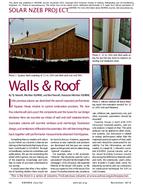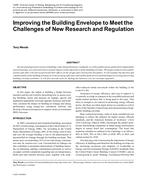A compartment fire represents one of the fundamental elements in building smoke. This paper compares the numerical predictions from computational fluid dynamics (CFD) to two sets of selected compartment fire experimental data. Using a Reynolds-averaged approach for turbulence in the first compartment fire comparison, it is shown that the numerical results of the heat and mass exchange through the compartment opening are in good agreement with the experimental measurements. Overall, a difference within approximately 10% is observed for the centerline flow velocity and temperature, as well as the upper layer height and the temperature at one corner of the compartment. In addition, the results suggest that far-field predictions would not be sensitive to the modeling approach of the fire inside the compartment when the fire-associated transport phenomena are taken into account. The second comparison verified the prediction of the compartment interior wall surface temperature using large eddy simulation. The discrepancy in the numerical results is between 10% to 25% for a pool fire from 170 to 390 kW. From these results, the practical implications of CFD modeling for smoke control are discussed.
Units: Dual
Citation: ASHRAE Transactions, vol. 115, pt. 1, Chicago 2009
Product Details
- Published:
- 2009
- Number of Pages:
- 9
- File Size:
- 1 file , 2 MB
- Product Code(s):
- D-CH-09-027


